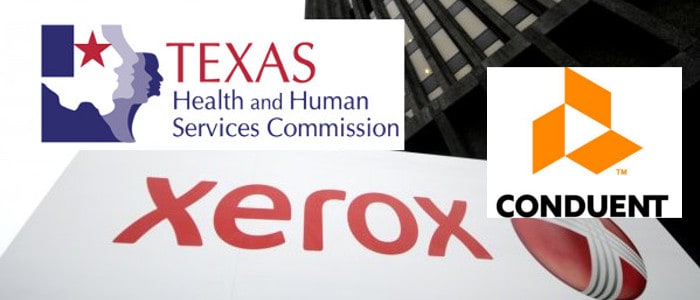TDMR has learned that Xerox/Conduent is in talks with the Office of Attorney General to settle the $2 billion Medicaid fraud case against the company, once Texas’ Medicaid claims administrator. The amount is calculated to include triple damages and civil penalties for every illegal act performed for almost two hundred thousand alleged illegal acts.
Started back in 2014
Xerox/Conduent was fired as the lead contractor from the Texas Medicaid and Health Partnership and the legal action brought against it back in May of 2014. The state alleged that it had cost taxpayers hundreds of millions of dollars by rubber-stamping orthodontic prior authorizations that did not meet the state’s standards for medical necessity.
The legal action came three months after several dentists filed a similar lawsuit against the company. Neither the state or Xerox/Conduent has shown any interest in settling this outstanding case.
Xerox/Conduent misrepresented PA process
However, the state lawsuit further alleges that the company continuously lied to state officials from 2004 to 2012 falsely reassuring them that the company’s Medicaid orthodontic prior approval (PA) process was sound. But, as has already been reported long-time since, the company was doing no review at all, using untrained dental “specialists” to simply add up HLD scores.
Xerox/Conduent’s legal defense has been that state officials were well aware of the company’s deficient PA process. TDMR has published stories with court documents as available backing the claim. It is true that state officials like then-State Dental Director Linda Altenhoff knew the truth as early as 2008 and nothing was done to get the company to change its ways.
Court documents show extent of case against company
However, court documents now obtained by TDMR show the extent of the state’s case against the company and the testimony and documentary evidence it will rely on to prove its case should it ever go to court.
This is the first time we have seen specifics relating to the claims of misrepresentation.
The evidence is compelling.
We already knew that Xerox didn’t follow the state-approved policies and procedures that required a review of ALL orthodontic prior authorization requests by the Xerox/Conduent dental director. In actual fact, 90% of the requests were never sent to the dental director.
Yet the company told state officials at various times over the years that it was.
Three examples from one court document:
1. “Xerox’s 2002 Proposal represented that one of the criteria reviewed in performing quality assurance of prior authorization is whether “the PA request [was] adjudicated correctly, based on the HHSC-approved procedures and medical criteria.””
2. “In response to a SAR (State Action Request) requesting TMHP”s current quality assurance process being performed for prior authorization, on July 20, 2009, Xerox submitted a quality assurance policy and procedure (“P&P”) that stated one of the criteria for quality assurance is whether “[a]ll medical facts are considered and documented in the PA determination.”
3. Xerox/Conduent’s corporate representative Erik Holt testified in a deposition that the policies and procedures that were given to the state “just aren’t accurate. That is not the way the flow and the … work happened at TMHP.”
Xerox/Conduent SEC filing shows settlement talks
So, with the specter of a jury trial within the next year or so, it is not surprising that the company would want to settle. It indicated its desire to do so in its most recent SEC filing which in part says:
“During October of 2018, discussions with the State were undertaken to determine if a mutually acceptable settlement might be reached. Those discussions were not productive.
“In the wake of those discussions, we have recorded an additional $72 million reserve during the third quarter of 2018, increasing our aggregate reserve for this matter as of September 30, 2018, to $110 million.
“We are not able to determine or predict with any degree of certainty the ultimate outcome of any future settlement discussions or this proceeding or to estimate any reasonably possible loss or range of losses, if any, in excess of the $110 million the Company has accrued.”
Settlement needs to be huge
The question arises how much would a settlement be?
Xerox/Conduent successfully avoided any major scrutiny from 2011 to 2014. Those who remember know that the HHSC-OIG under Jack Stick and Doug Wilson focussed exclusively on blaming Medicaid dental providers. Former IG Doug Wilson told a provider in an informal meeting just before the lawsuit against Xerox/Conduent was made public that the orthodontic debacle had “nothing to do with Xerox.”
It appears that media pressure in early 2014 had a lot to do with the filing of the suit. Just a few weeks before the filing became public, the Texas Tribune published a major story which was republished in the New York Times about how the company had evaded scrutiny and questioned why the state was still doing business with it. The Statesman published a similar story shortly after the announcement of the lawsuit.
Last year the State of Texas had to repay the Federal Government over $133 million that the feds demanded after an HHS-OIG audit determined that Xerox/Conduent had not followed state Medicaid guidelines when reviewing the orthodontic PA requests. The Texas share was another $58 million.
Considering the additional millions of dollars in attorney fees and court time that have been incurred by the OAG over the last five years, any settlement under $200 million would be a further waste of taxpayer monies considering the state was seeking $2 billion.
We’ll have to see what happens.


